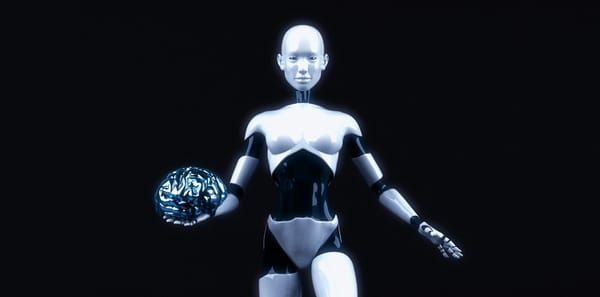The Future of HR: Top 10 Tech Trends to Watch
Technology is leading the way in ushering in a new era in the workplace. The human resources sector, which was once thought to be exclusively "human" in nature, now intimately interacts with state-of-the-art technology, drastically altering how businesses empower, oversee, and interact with their staff. Recruitment algorithms and wearable health trackers are just two instances of the fascinating ways that HR technology is developing. This in-depth analysis will cover the top 10 technical advancements in HR and provide insightful guidance on how to make the most of them for a more positive and productive work environment.
· Artificial Intelligence (AI) in Recruiting:
AI is transforming the hiring process. These clever systems sift through massive applicant pools in a fraction of the typical time, identifying potential candidates by matching their experience and skill sets to job requirements. However, speed is not as critical as precision. AI-powered predictive analytics may assess a candidate's future success prospects and cultural fit, reducing the likelihood of a bad hire and ultimately saving money.
· Virtual Reality (VR) Onboarding:
The onboarding procedure is seeing a virtual revolution. Businesses are using virtual reality (VR) to simulate real-world job activities, train employees about health and safety, and offer 360-degree tours of their buildings. These uses allow new hires to fully immerse themselves in their roles before they start. This technology is particularly useful in today's remote work environment for fostering a sense of inclusion and connection among faraway workers.
· Chatbots for Employee Queries:
HR chatbots are the latest digital assistants for workers; they are always available to answer inquiries regarding different HR regulations or procedures. These intelligent bots are made to answer standard questions, ensuring that employees always get the information they need quickly and allowing HR personnel to focus on more crucial tasks.
· People Analytics:
HR is about cold, hard facts, not opinions. People analytics technology collects and evaluates employee data to identify patterns and predict trends, such as which employees are most likely to quit and how to boost engagement. It all boils down to proactive management, which makes educated decisions that improve the overall well-being of the workforce by using information.
· Automated Learning & Development (L&D):
The days of teaching everything to everyone are gone. AI-driven learning and development systems, which recommend courses based on job roles, career ambitions, and skill gaps, have made personalized learning experiences possible. These platforms make continuing education easier, which is crucial in today's ever-changing corporate world.
· Blockchain for Credential Verification:
Blockchain technology, which powers cryptocurrencies, is now a trusted ally in the field of human resources. This reduces the risk of fraud, streamlines the verification process, and provides a secure, unchangeable record of candidates' qualifications.
· Wearable Tech for Wellness:
High-tech tools are being employed to improve worker welfare. Businesses are incorporating wearable technology to monitor physical activity and stress levels, among other indicators, to gather data for creating better work environments. These wearables can help employees avoid burnout and maintain high productivity by signaling when they need a break.
· Remote Work Platforms:
The rise in remote work has made digital platforms essential. Team cohesion, progress tracking, and communication are all maintained with the aid of these collaboration and project management tools, which effectively replicate the office experience in a virtual setting.
· Digital Employee Feedback Systems:
Annual reports have become obsolete. Digital feedback systems enable continuous and real-time feedback, aligning with the instantaneous communication culture of the digital age. These platforms support continuous communication, timely acknowledgment, and effective problem-solving, all of which contribute to a healthy work environment.
· Augmented Reality (AR) in L&D:
AR is adding a more dynamic dimension to education. Augmented Reality (AR) overlays graphics on real-world environments to create interactive experiences that enhance understanding and memory. Real-world simulators are highly helpful for technical training since they may provide actual experience without the risks or costs associated with it.
Benefits and Integration Tips:
As a result of these technology developments, HR is changing dramatically. There are several advantages, such as increased productivity, data-driven decision-making, and employee engagement. However, strategic planning is required for their incorporation into the current systems. Start by determining which aspects of your HR processes require improvement. Next, decide which technology best fits these specifications as well as your overarching business objectives. Make sure there is extensive testing done before a full-scale launch, and give your workers enough training so they can become used to these new technologies. Recall that the goal is to enhance, not replace, the human element in your HR by using technology as a lever.
HR's future is being reshaped by the wave of technology, which will make it more employee-centric, perceptive, and efficient. These developments represent an evolution rather than merely a shift; they offer a chance to go beyond conventional approaches in order to maximize operational efficiency and improve employee experiences. It is critical that we remain informed and flexible as we negotiate this exciting turning point. After all, limitless opportunities arise when human intellect and technology combine. Accept the shift and allow your HR department to take the lead in a tech-driven, innovative future!




